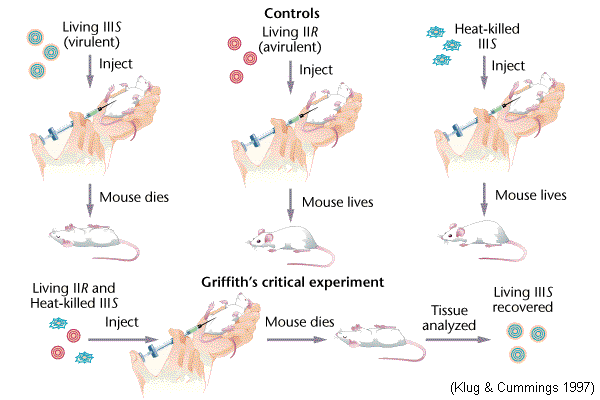
Griffith's Transformation Experiment

Griffith's Transformation Experiment
Pneumococcus bacteria include
two strains, a virulent S
strain with a Smooth glycoprotein coat that kills
mice (left), and a non-virulent
R Rough strain that does not
(middle). Heating destroys the virulence of S (right).
In the critical experiment, Frederick
Griffith (1928) mixed heat-killed S
with live R and injected the combination into
mice: the mouse died.The dead mouse's tissues were found to
contain live bacteria with smooth coats
like S. These bacteria were subsequently able to kill
other mice, and continued to do so after several generations in
culture.
Griffith concluded that something
in the heat-killed S bacteria 'transformed'
the hereditary properties
of the R bacteria. The nature of this 'transforming
principle' was unknown.
HOMEWORK.
What do each of the "Control" experiments control for? Suppose
the combination of heat-killed S and live R
killed the first generation of mice, but not the
second or subsequent generations. What would you conclude about
transformation?